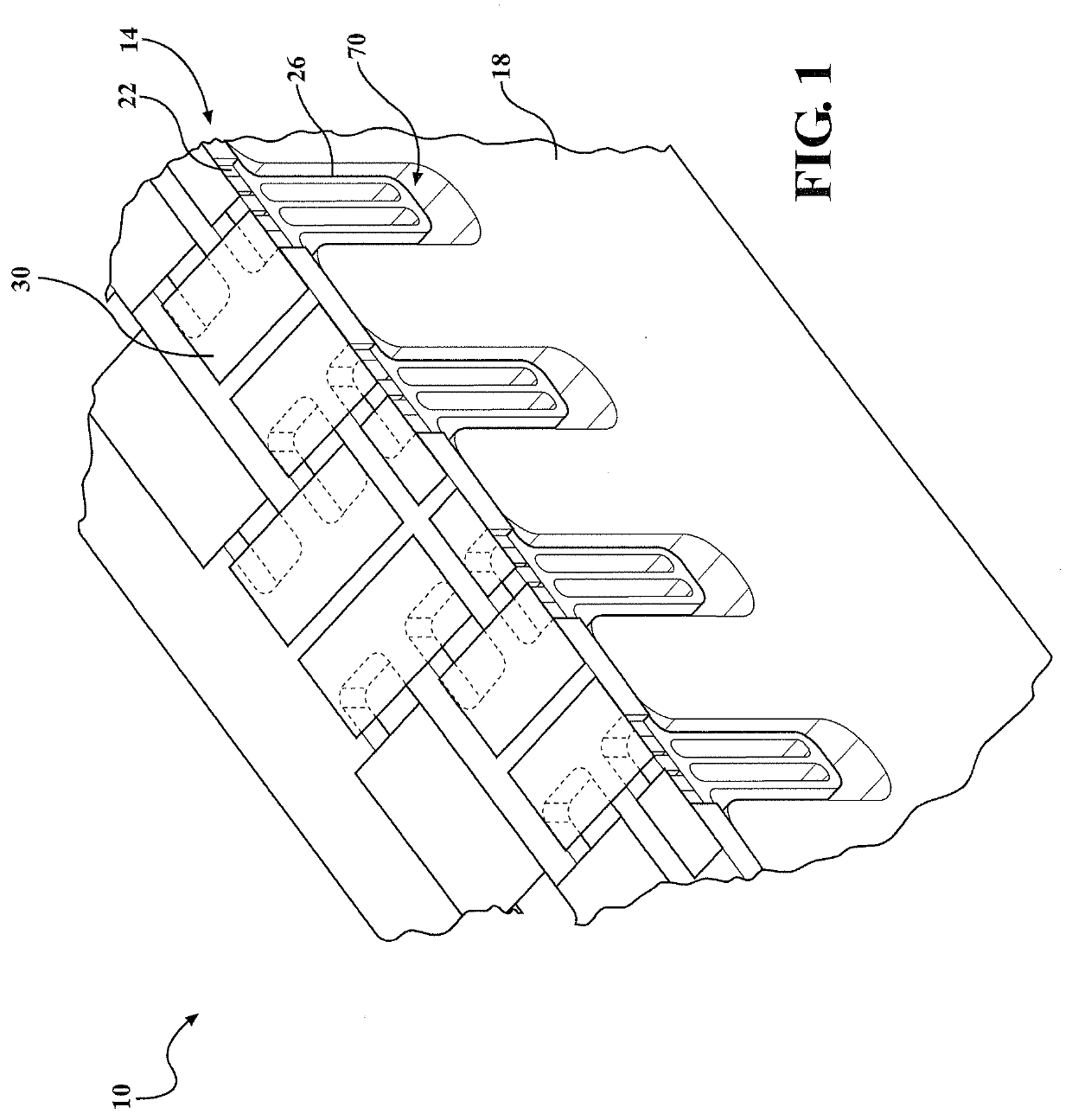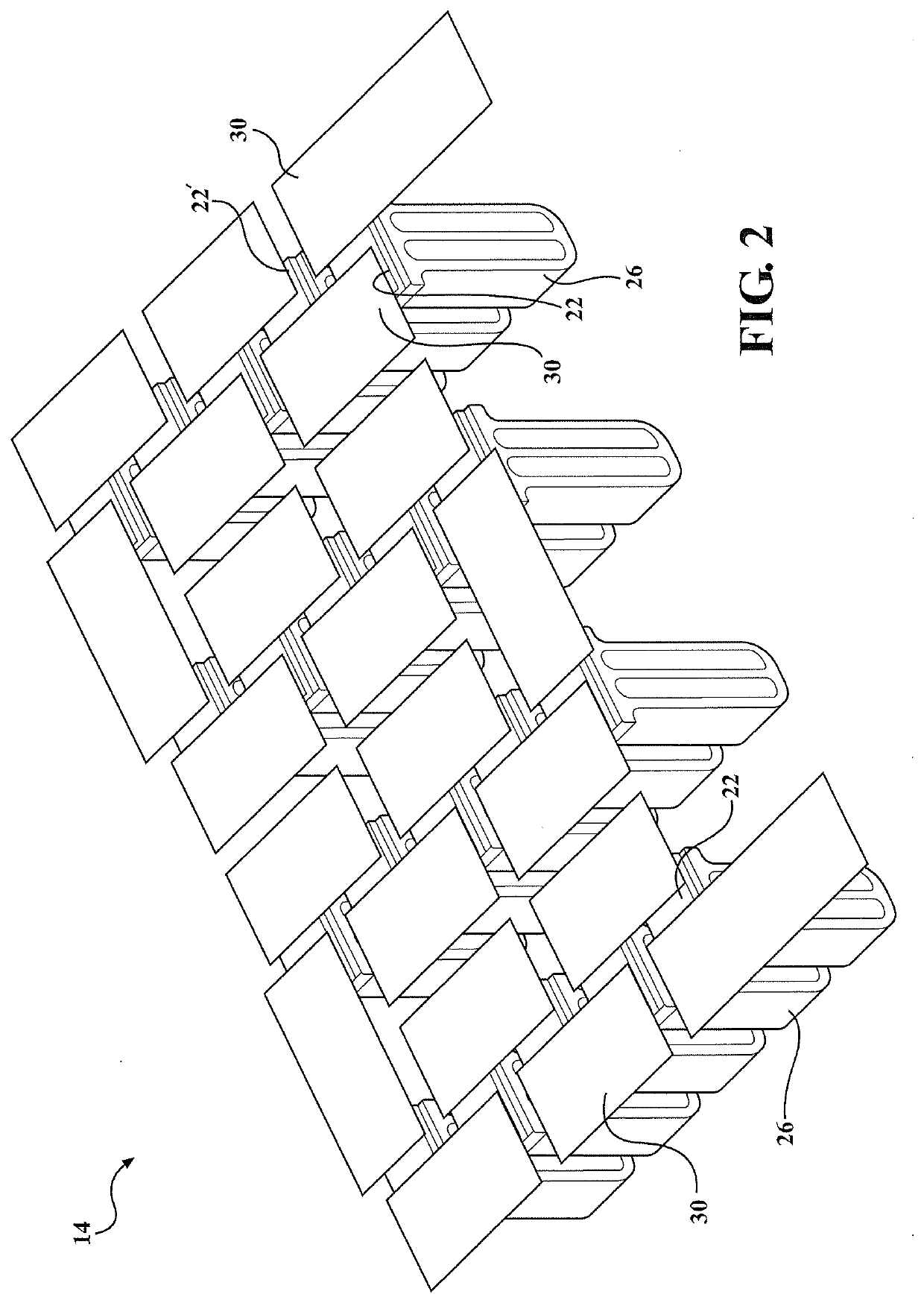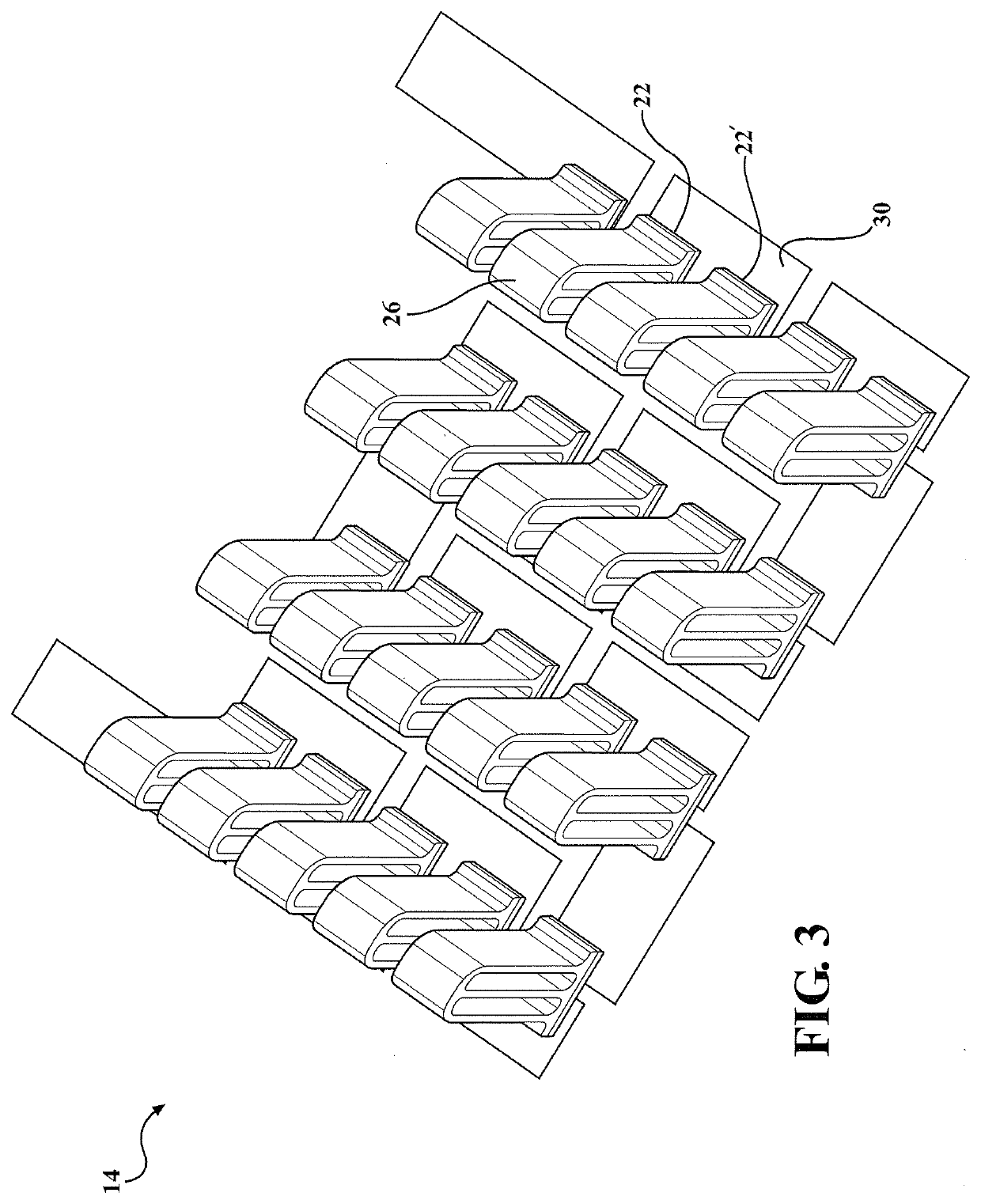Unicouple Based Flexible Thermoelectric System
- Summary
- Abstract
- Description
- Claims
- Application Information
AI Technical Summary
Benefits of technology
Problems solved by technology
Method used
Image
Examples
first embodiment
[0026]According to the present disclosure, the upper foam 66 and the main foam 74 may comprise conventional polyurethane foam having densities suitable for an intended application. The upper foam 66 and the main foam 74 may have different densities, similar densities, and / or may be comprised of different foam materials. Likewise, any suitable adhesive may be used to adhere the upper foam 66 with the main foam 74.
[0027]FIGS. 5 and 6 illustrate a side view and a top perspective view, respectively, of the thermoelectric circuit 14 assembled with the foam pad 58 according to one embodiment of the present disclosure. The thermoelectric circuit 14 containing the plurality of unicouples 22 may be integrated into the seat foam pad 58 by pressing the unicouples 22 with heat sinks 26 through the insertion holes 68 in the upper foam 66 and into the airflow channels 70 in the main foam 74. Generally, the unicouples 22 may be positioned within, above, below, and / or partially within the insertion...
second embodiment
[0032]FIGS. 8 and 9 illustrate a side view and a top perspective view, respectively, of the thermoelectric circuit 14A assembled with the foam pad 58A according to the present disclosure. The thermoelectric circuit 14A containing the plurality of unicouples 22A may be integrated into the seat foam pad 58A by pressing and / or inserting the unicouples 22A with heat sinks 26A through the insertion holes 68A in the upper foam 66A and into the airflow channels 70A in the upper foam 66A. Generally, the unicouples 22A may be positioned within, above, below, and / or partially within the insertion holes 68A in the upper foam 66A after the unicouples 22A are inserted through the insertion holes 68A.
[0033]Each airflow channel 70A is generally sized such that the width and depth of the airflow channel 70A is greater than the width and length of an individual heat sink 26A. Thus, when the heat sink 26A is pressed into the airflow channel 70A, there is airflow space between the heatsink outer walls...
third embodiment
[0035]the present disclosure integrating a thermoelectric circuit 14B into a seat foam pad 58B is generally shown in FIGS. 10-12. FIG. 10 illustrates a top perspective view of the seat foam pad 58B which comprises an upper foam 66B assembled to a base foam 74B. Airflow channels 70B, 70W and insertion holes 68B, 68W may be partially or fully integrated into the upper foam 66B. Opposing airflow channel sidewalls 98B, 102B, 98B′, 102W may be formed within the upper foam 66B. The sidewalls 98B, 102B, 98W, 102W may abut adjacent surfaces with generally a right angle corner 110B, or alternatively, the corners 110B may have a radius, bevel, taper, or other contours suitable for an intended application. Partition walls 118B in the upper foam 66B separate each of a plurality of adjacent airflow channels 70B, 70W. An exemplary foam partition wall 118B extends between one sidewall 102W of the airflow channel 70W and an adjacent sidewall 98B of the airflow channel 70B. The partition walls 118B ...
PUM
 Login to View More
Login to View More Abstract
Description
Claims
Application Information
 Login to View More
Login to View More - R&D
- Intellectual Property
- Life Sciences
- Materials
- Tech Scout
- Unparalleled Data Quality
- Higher Quality Content
- 60% Fewer Hallucinations
Browse by: Latest US Patents, China's latest patents, Technical Efficacy Thesaurus, Application Domain, Technology Topic, Popular Technical Reports.
© 2025 PatSnap. All rights reserved.Legal|Privacy policy|Modern Slavery Act Transparency Statement|Sitemap|About US| Contact US: help@patsnap.com



